Meetings inspire strong opinions — and they remain divisive even as information workers navigate new ways of working, from the shift to hybrid models to embracing AI. Despite the rise in asynchronous work and new stats indicating that time in meetings is declining, organizations continue to struggle with burnout, disengagement, and feeling spread too thin. Are meetings to blame?
To find out, Miro surveyed 4,073 information workers split evenly across four global markets: the United States, United Kingdom, Germany, and Japan. The findings reveal broad consensus about the state of meetings today, while also illuminating some key differences. In this report, we’ll take a closer look at the U.S. data as a case study of what is and isn’t working.
We know that collaborative work and innovation go hand in hand, so fixing what’s broken with meetings today paves the way for stronger collaborations and innovations moving forward.
Let’s dive in.
98% claim to pay attention in meetings, but 71% multitask
To begin, let’s dispel a popular misconception: People don’t actually hate meetings. In fact, 77% of U.S. information workers agree that meetings are important for collaboration, higher than any other market surveyed. But, while 60% say that their company has the right amount of meetings, four in 10 agree that their company could boost collaboration by cutting back on them.
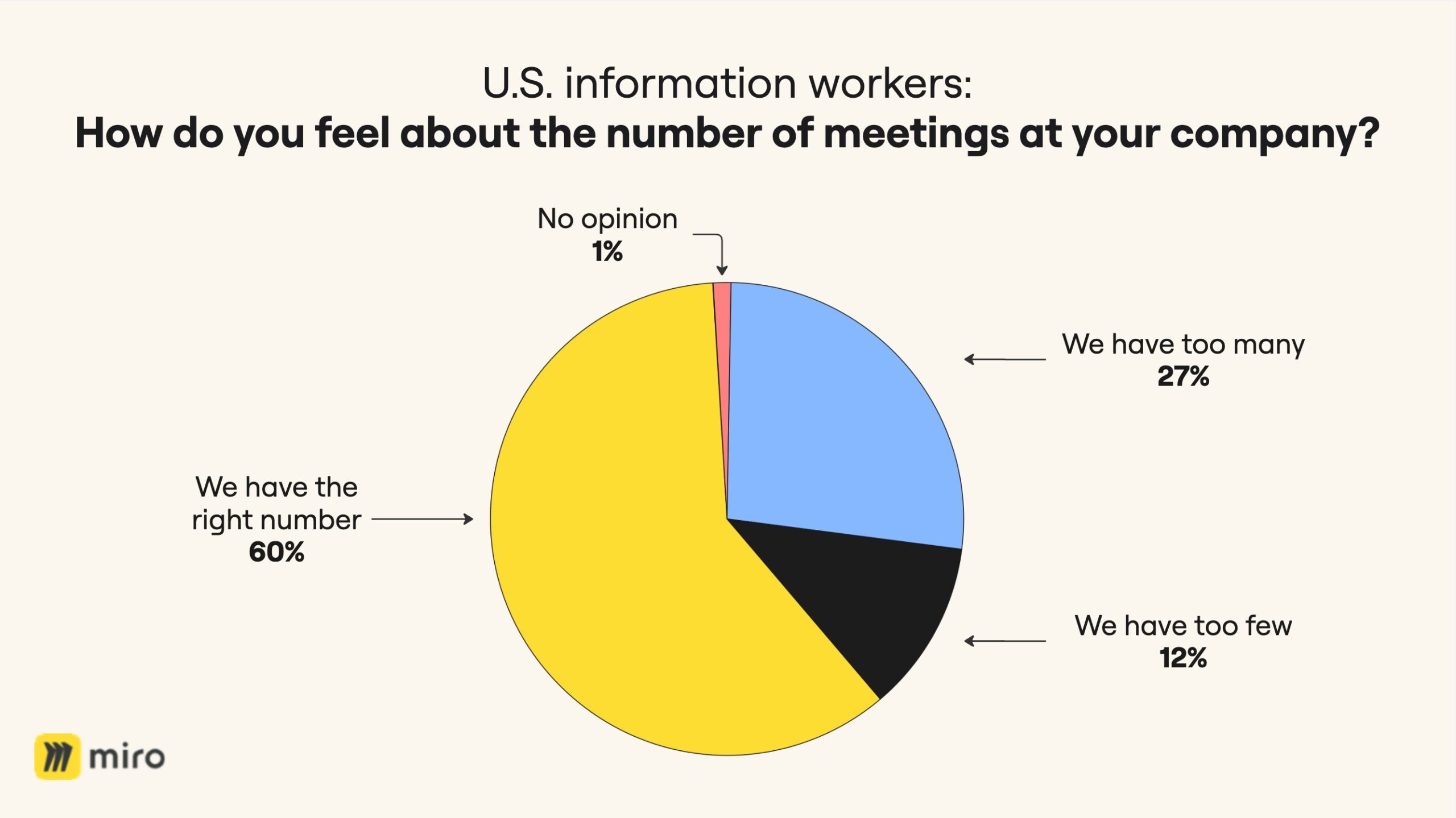
Ironically, one of the biggest problems about talking about work is that it interferes with the actual execution: 43% of U.S. information workers say that meetings get in the way of their other work. This creates a cycle in which team members multitask in meetings to cope with their time crunch. Among U.S. information workers, 71% admit to being regular multitaskers and 10% even say they do this in every single meeting — higher than any other market.
What’s more, among the four countries surveyed, a whopping 98% of U.S. workers say that they typically pay attention in their meetings — again, higher than anywhere else. While people feel confident in their own laser focus, they aren’t so sure about their colleagues: Only 20% believe that their coworkers always pay attention during meetings.
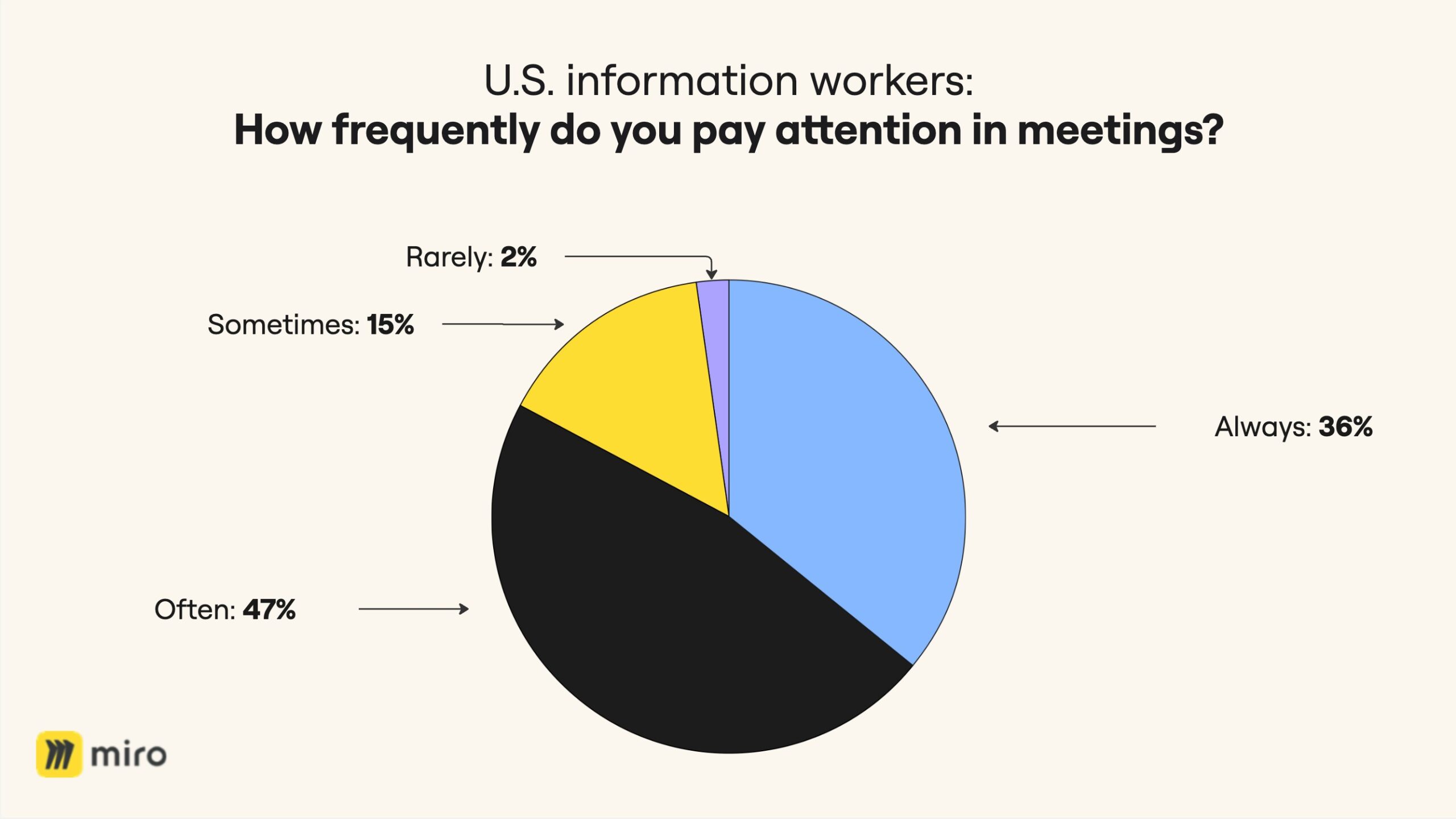
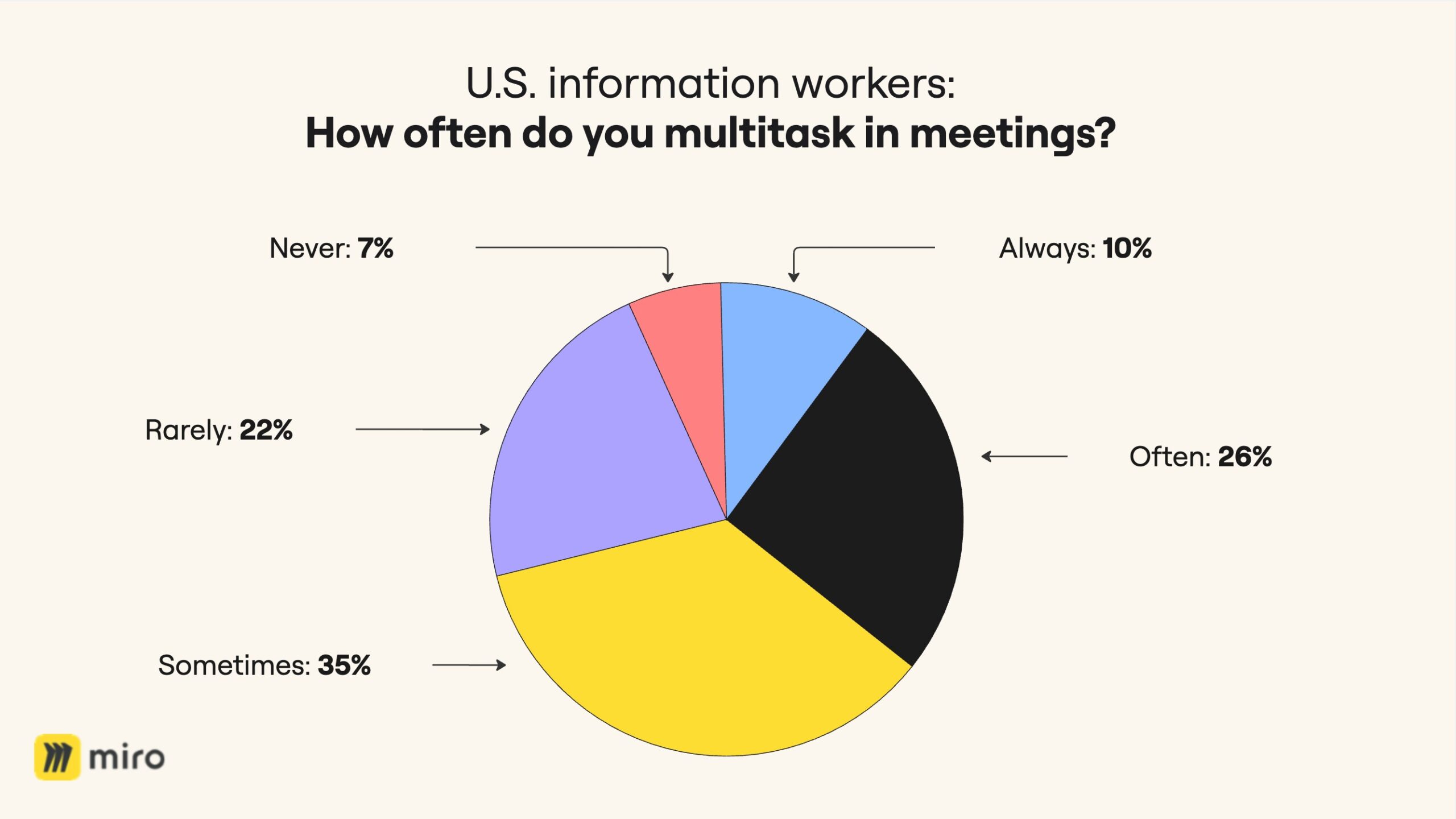
65% report feeling panicked as calendars stretch to accommodate meeting load
With the average worker spending 37% of their days either in meetings or coordinating them, it’s no wonder that meetings are taking a toll on daily life.
First, let’s consider how overwork affects physical and emotional wellbeing. We find that 64% of U.S. information workers have skipped meals due to meetings, while 65% report days with zero breaks. Nearly seven in 10 (67%) have felt burnt out, either currently or in the past, due to their meeting schedule, and an alarming 65% report feeling panicked about their meeting load. And, for some, the situation has driven them to tears, crying during (17%) or after (22%) meetings.
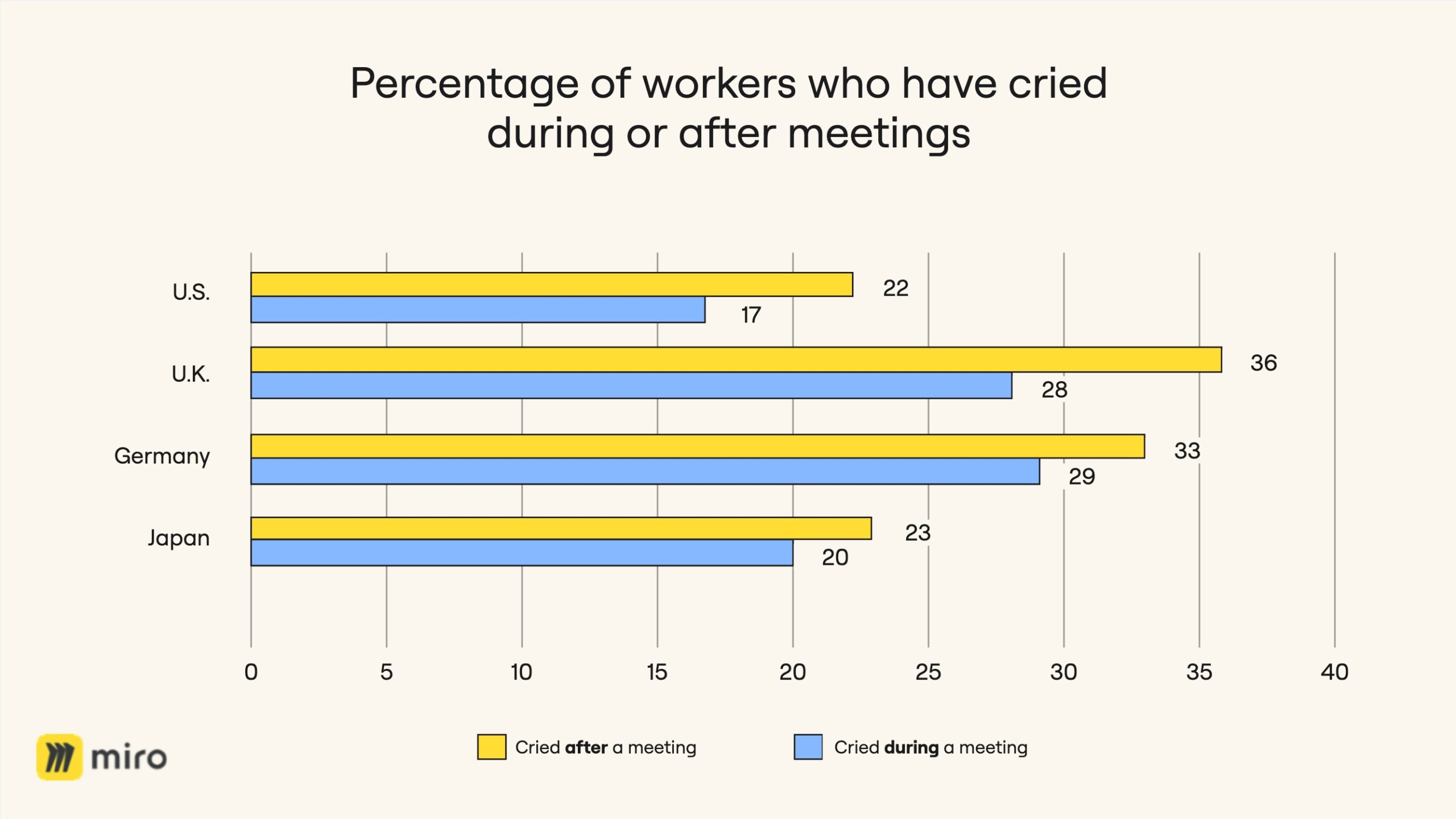
Second, let’s turn to the role of meetings in blurring work-life boundaries — our findings here are startling, both in the U.S. and beyond. Sixty-one percent of U.S. information workers have attended meetings while on PTO or holiday, and 76% report attending meetings outside of their typical workday. Even blocking off time on the calendar can’t keep meetings at bay: 78% have had meetings scheduled during times they marked as unavailable.
Finally, our findings call into question whether non-obligatory meetings are what they seem: 81% of workers have felt pressured to attend a meeting even if they were marked “optional.”
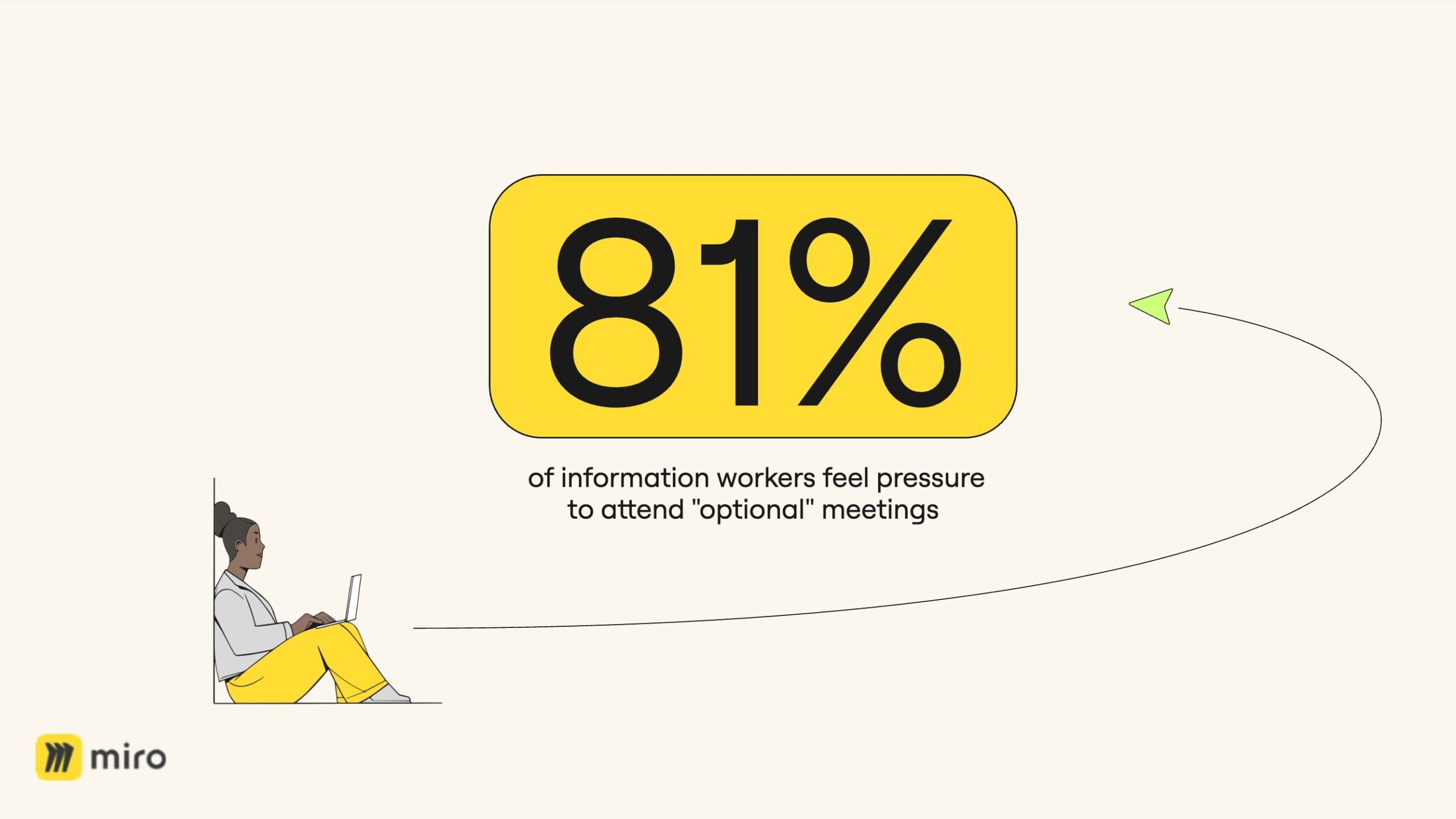
Extroverts dramatically overestimate meeting inclusivity
Although nearly eight in 10 (78%) of U.S. information workers believe that inclusivity is important for meetings, our survey reveals troubling disparities between introverts and extroverts. To start, while an overwhelming majority of extroverts agree that their company (76%) and team (79%) have inclusive meeting cultures, the numbers drop to 56% and 59% (respectively) for introverts.
The simple truth is that meetings aren’t working equally for everyone. Although a clear majority of extroverts are confident sharing ideas (84%) during meetings, only 30% of introverts say the same. Similarly, just 38% of introverts are usually confident asking questions in meetings, compared to 85% of extroverts. What’s more, introverts are twice as likely to save their questions until after the meeting: 72% do this regularly versus only 36% of extroverts.
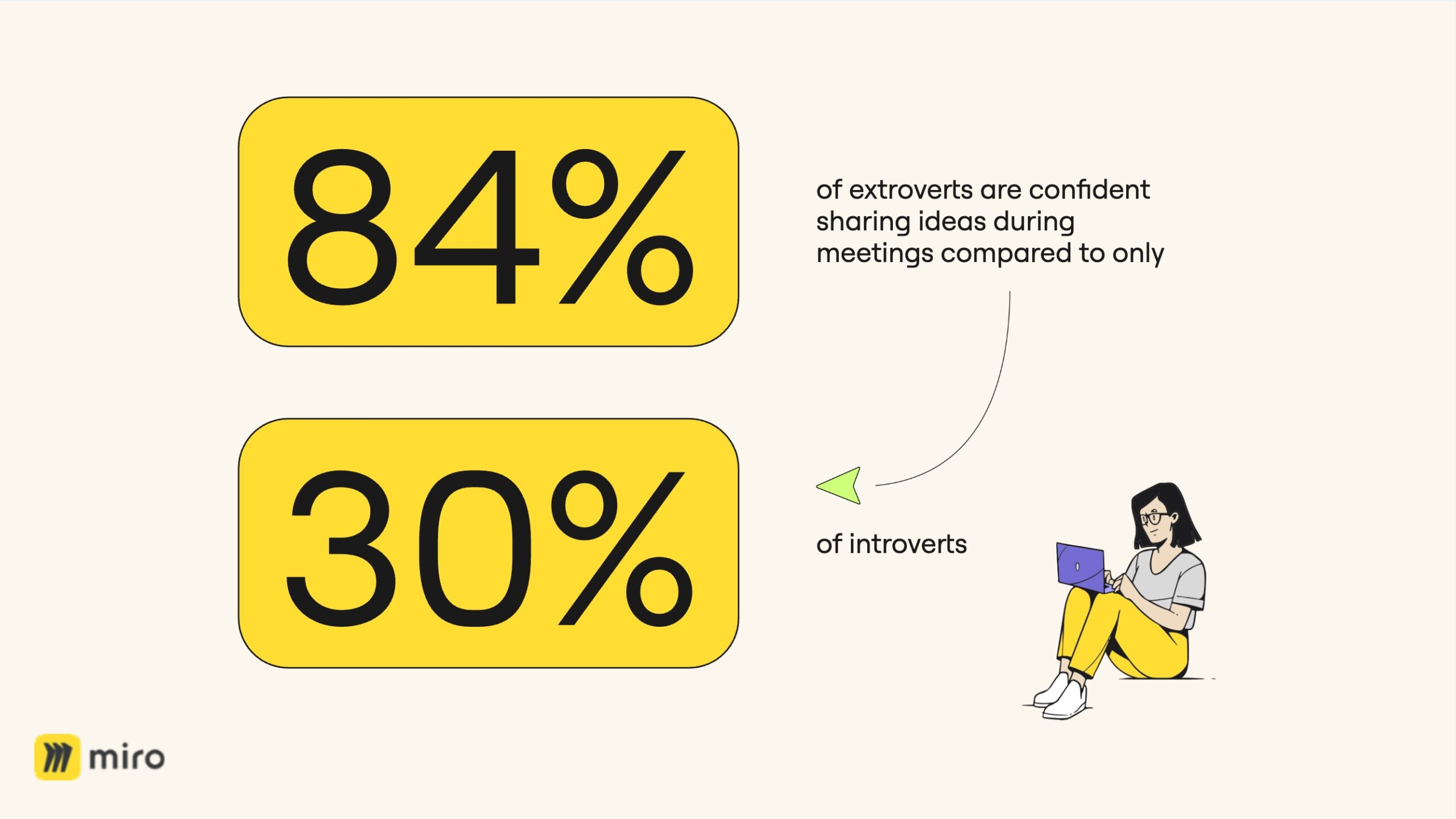
Personality styles also shape perceptions of meetings’ benefits. Eighty-one percent of extroverts agree that meetings help build relationships across teams, but only 53% of introverts agree. Similarly, while 43% of introverts agree that meetings are useful for building relationships with leaders, the number rises to 77% for extroverts.
The takeaway is clear: Meetings work better for extroverts who, in turn, know how to make them work for them. We find that extroverts are much more likely to agree that speaking up (63%) and presenting (67%) in meetings is important for getting promoted, versus only four in 10 introverts.
Across the board, extroverts have significantly higher satisfaction with the state of meetings today. Eighty-five percent are satisfied with their level of participation in meetings, compared to less than half (48%) of introverts. Similarly, extroverts report greater satisfaction with the quantity (72% vs. 43%), quality (79% vs. 50%), and outcomes of meetings (78% vs. 48%).
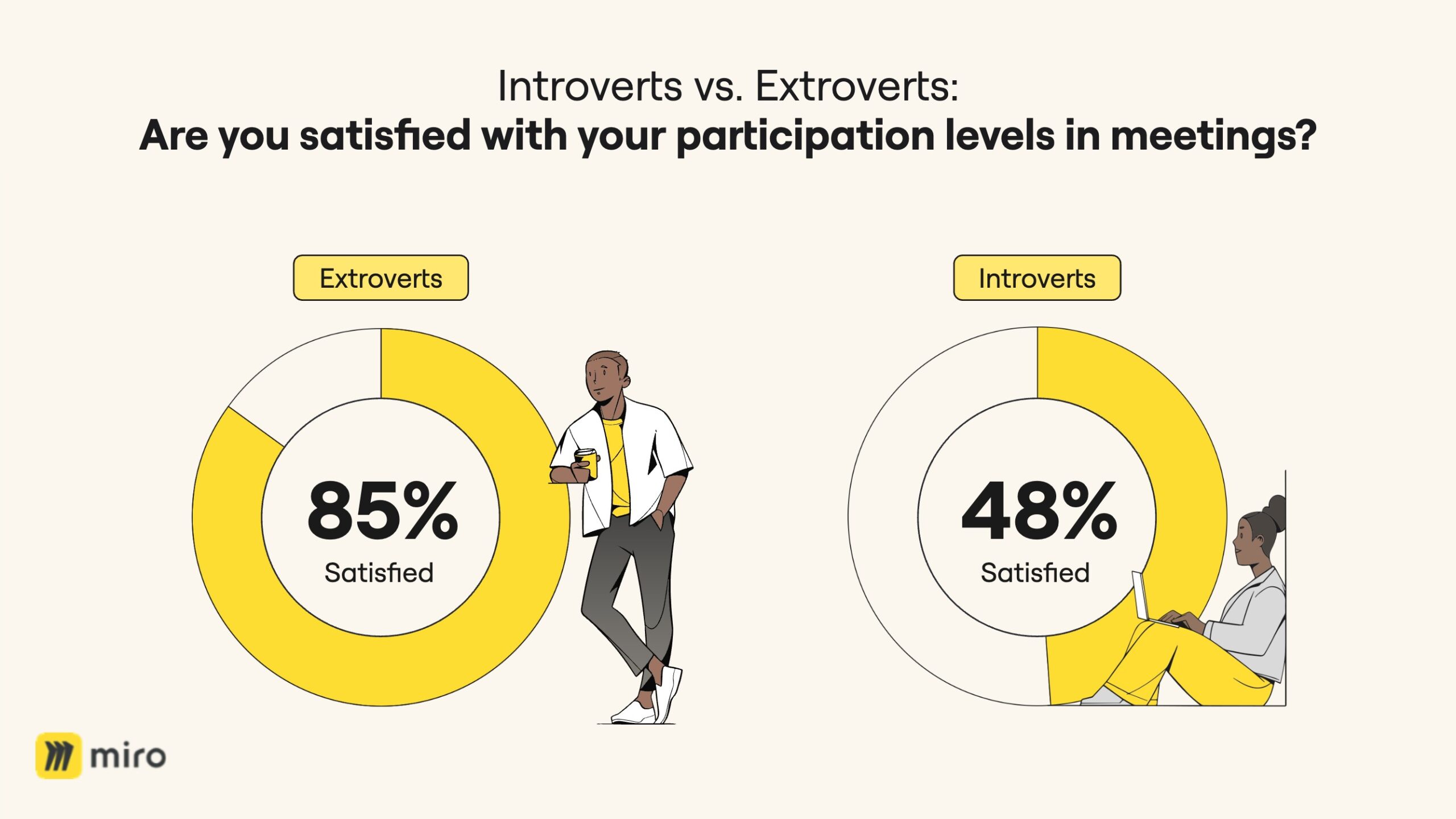
Hybrid workers pay a high price for their flexibility
Recent research shows that hybrid work has influenced how, when, and where workers have meetings, and our survey sheds additional light on how people feel about these shifts. Hybrid workers have an awkward status, sandwiched between the relative clarity of remote versus fully in-office roles — and nowhere is this more evident than in their experiences with meetings.
On the surface, hybrid workers appear to have the best of both worlds. Seventy-six percent are happy with their level of participation in meetings, compared to just 63% of remote workers. What’s more, onsite workers are twice as dissatisfied with meeting outcomes as their hybrid peers. All told, 74% of hybrid respondents are satisfied with overall meeting quality in their company, higher than both in-office (70%) and remote (57%) team members.
However, hybrid workers are paying a price for their flexibility. Over one in four (26%) say they frequently or always struggle to complete their daily work due to meetings, but only 17% of remote and 18% in-office respondents agree. Sixty-two percent of hybrid respondents report regularly having meetings scheduled during unavailable times, higher than their remote (46%) and on-site (43%) peers. And 25% report frequently needing to reschedule meetings due to personal conflicts, while the number drops to 13% for remote.
More concerning, we find that nearly half of hybrid workers now take meetings while on PTO, either occasionally (25%) or even most of the time (21%). In contrast, almost ¾ (74%) of remote and 67% in-office workers say they never or rarely do this.
Finally, hybrid workers are helping to build new hybrid work spaces. Nearly half do this occasionally or more, versus 33% in-office and 31% remote. In fact, we find that ¼ of hybrid information workers now regularly take meetings from these so-called third places, such as gyms or cafes. Contrary to popular assumptions, only 11% of remote workers say the same.
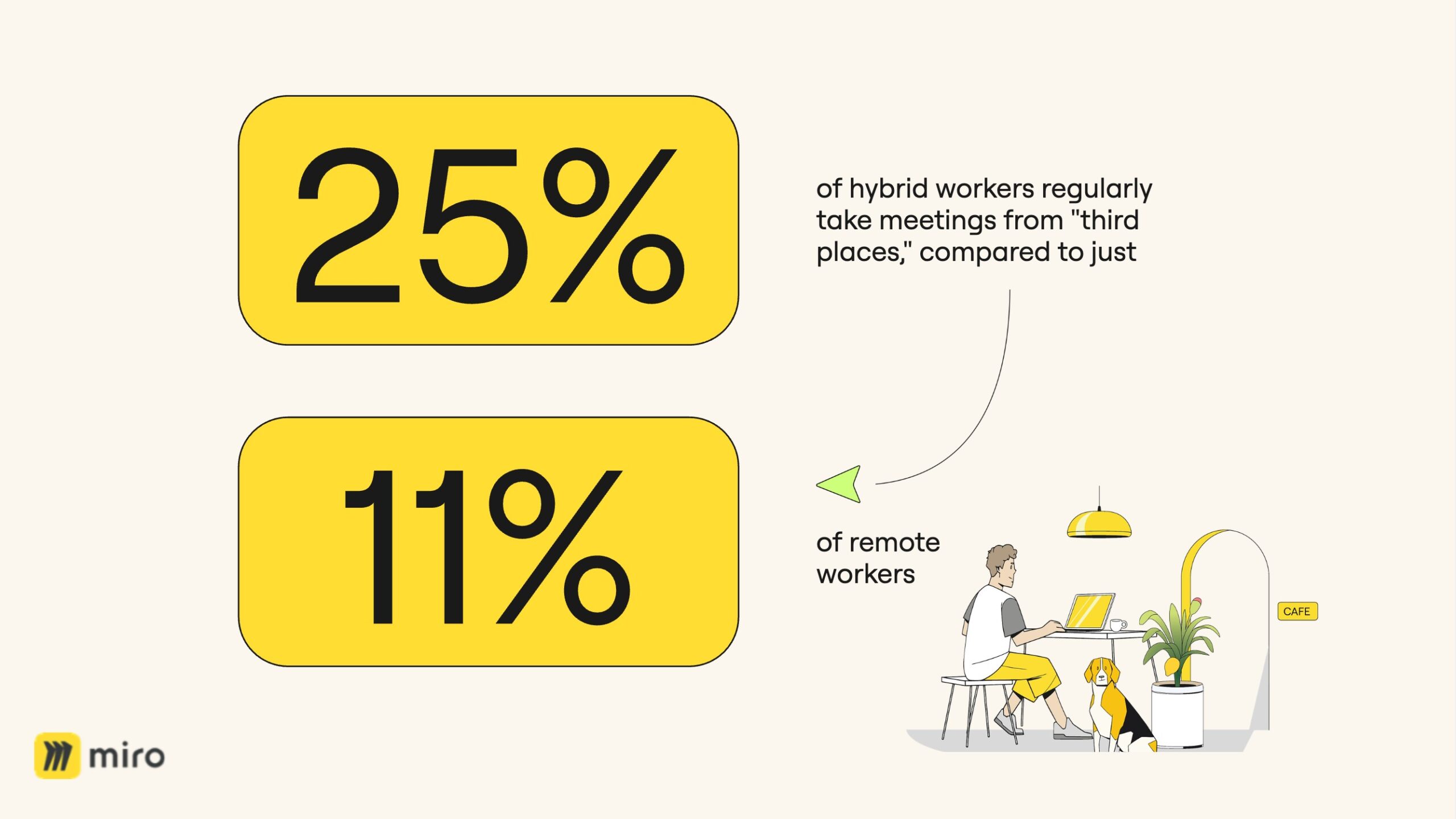
When meetings stall, so does innovation
Overall, our survey finds that workers are on board with meetings in theory, but the reality needs a lot of work — and the stakes are high. When workers experience friction around meetings, such as distractions from constant multitasking or the stress of regular after-hours sessions, innovation suffers.
Taking a closer look at the U.S. data, we see alarming trends around burnout, blurred work-life boundaries, and a need to be “always on” that is untenable in the long run. It’s also getting worse. As our data shows, there’s not a clear one-size-fits-all approach for everyone, with introverts and hybrid workers highlighting unique stressors in the current approaches.
By honing in on these common pain points, leaders and organizations can begin to rebuild their meeting culture to be more inclusive, efficient, and attuned to the needs of information workers on the ground. Not only will this create better experiences for teams, but it will also turbocharge collaboration and innovation for the future.
Methodology: Miro surveyed 4,073 information workers in April-May 2024 across the following markets: Germany (1,015), Japan (1,021), United Kingdom (1,021), and United States (1,016). All respondents were full-time employees.




